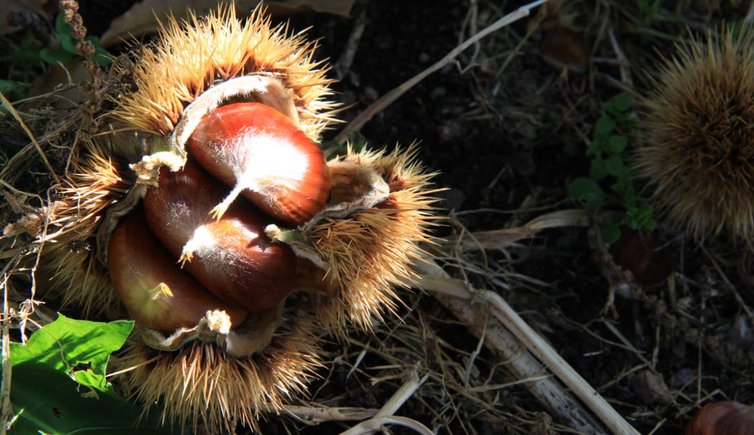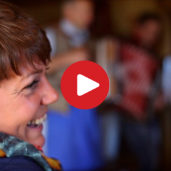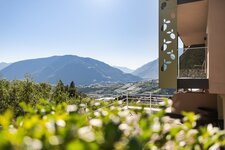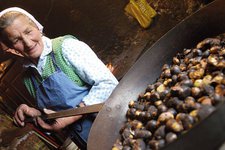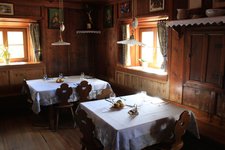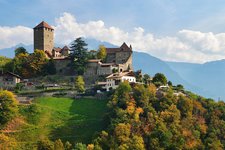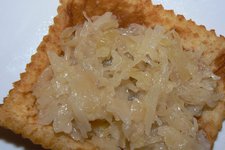The sweet chestnuts are one of the most important things of the Törggele tradition in South Tyrol, also in Merano and surroundings
The sweet chestnut, "Castanea Sativa" in Latin, is round with one flat side and has a red brown colour. It is consumed raw, roasted or boiled. At the Törggelen, the sweet chestnuts mostly are roasted and served as dessert, they are one of the most important components of this tasteful tradition.
Another variant of consumption is the combination with butter or as puree, together with ice cream or whipped cream. But attention - the saturation value of theses dishes is quite high! The gluten-free sweet chestnuts are also used as stuffing and side dish for roast goose, duck, gamebirds, turkeys and other autumnal meat dishes. People who suffer from coeliac disease can be happy about this fruit. Moreover the basic sweet chestnut offers a good opportunity, to rebalance our body again. So - few sweet chestnuts in the evening can be recommended!
Throughout the Mediterranean area chestnut trees are cultivated already since antiquity. Also in the northern neighbouring countries the climatic conditions still are all right. Some of the trees can grow up to 30 metres high. The chestnut first grows in a prickled shell, which is very decorative and used as ornaments in autumn.
In autumn, more precisely at the end of September / beginning of October, the sweet chestnuts are ripe and can be collected. Many a farmer has his own grove in the forest to offer them during the period of Törggelen which finally ends mid-November. Did you know, that the sweet chestnut is not related to the horse chestnut? Those only received the name due to its similarity.
